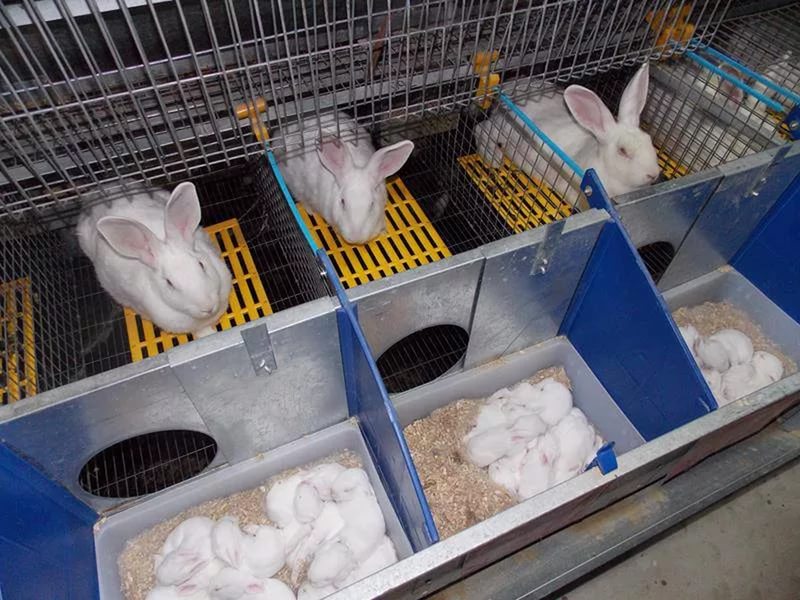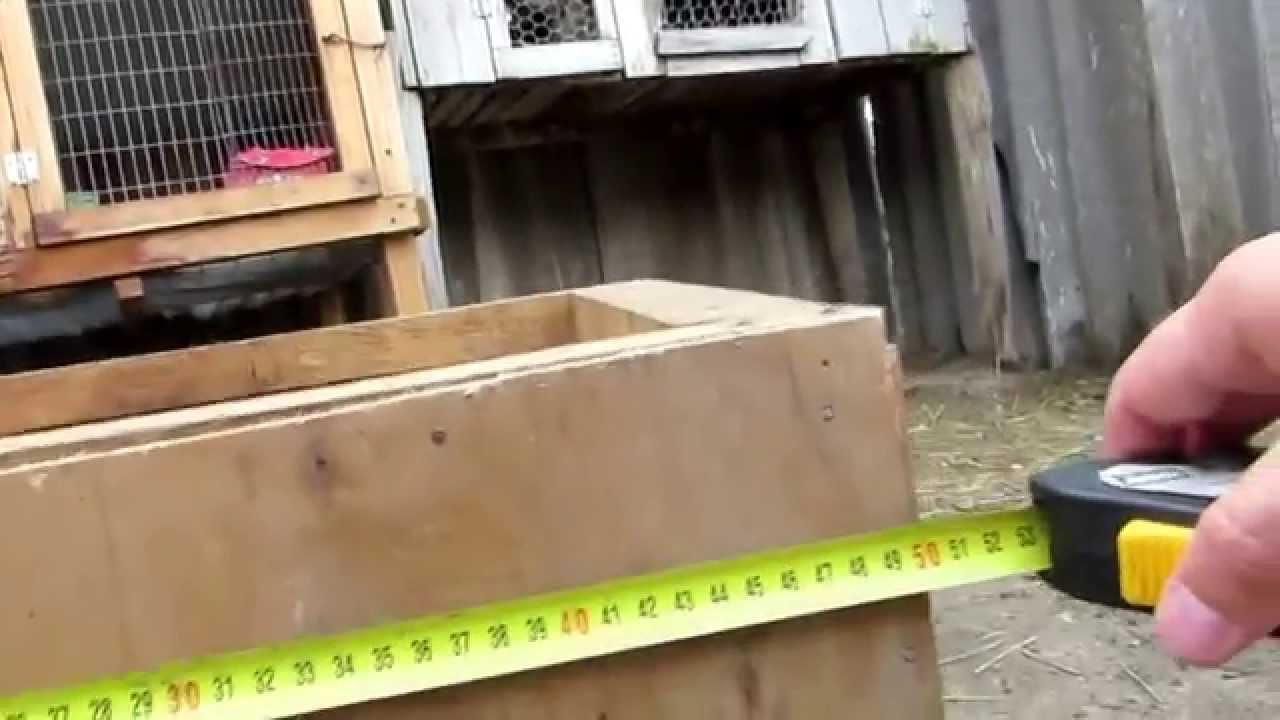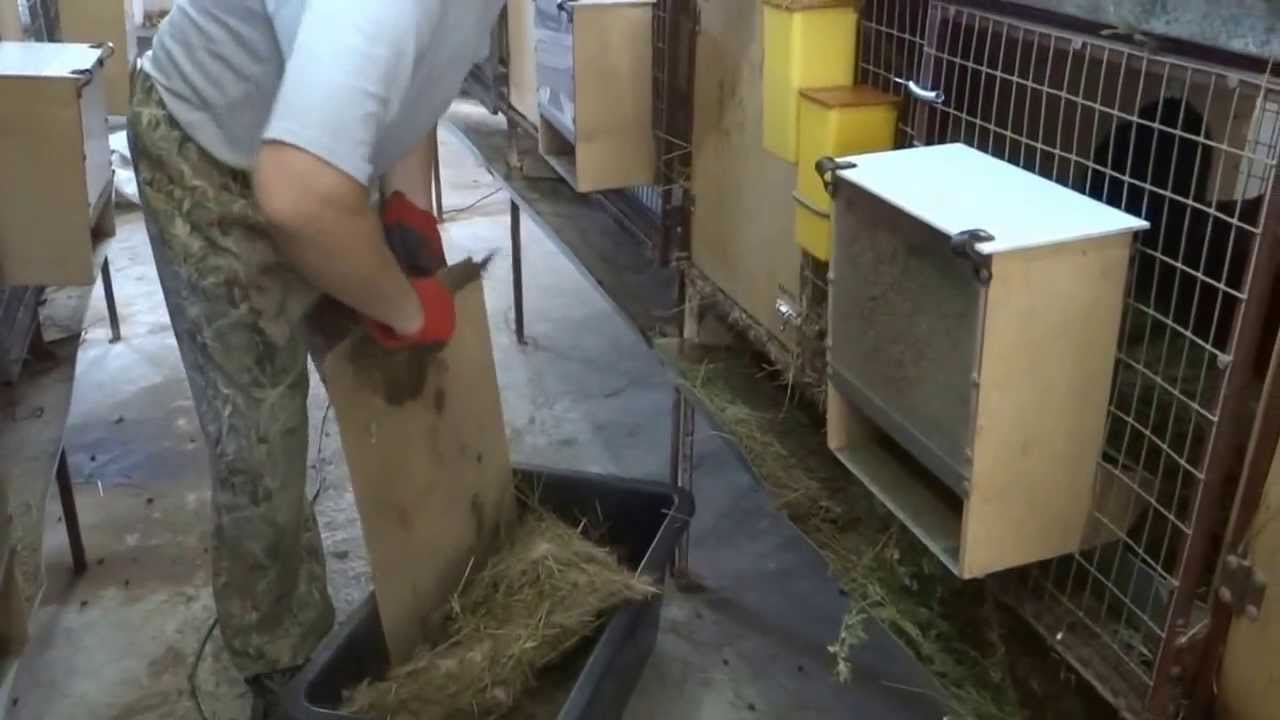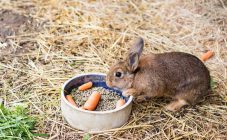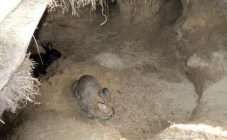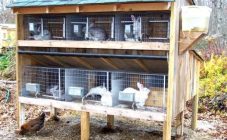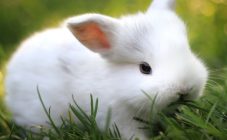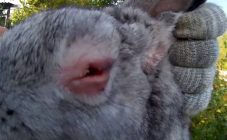Content:
Rabbit breeders are faced with the question of where to locate the nest for the mother-to-be. The best option is the construction of the mother liquor. In it, the female will feel comfortable and safe, which will favorably affect the percentage of surviving rabbits and their development.
Requirements to be met by the mother
In the wild, rabbit droppings are born in a burrow underground. Therefore, when building a mother house for rabbits, you need to try to make living conditions as close as possible to natural ones: a dark, warm, relatively spacious room.
When creating a drawing of a queen cell for rabbits with your own hands, it should be borne in mind that often a queen nursery is a container closed on all sides with a small round or oval loophole. For easy cleaning, the top wall should open or be removable. Focusing on the season of okrol and climatic conditions at this time, the box is equipped with heating, or left without it, but the floor must be insulated. A clean warm cloth, dry hay, sawdust, cardboard or paper are used as bedding.
The size of the rabbit's temporary dwelling with offspring depends on the specific breed. But it should not be too cramped or too spacious. In the first case, the rabbit will refuse to stay in the queen cell because of the inconvenience and lack of space. In the second, the female can confuse an oversized mother cell with the cage itself and will relieve the need for it, which will significantly worsen the sanitary conditions of the babies and add to the hassle of cleaning the owner.
Sizes of the mother liquor
Basically, a do-it-yourself queen cell for a rabbit has standard dimensions. And only for large breeds of rabbits the capacity of the constructed container exceeds the standard. Also, the parameters of the nest are influenced by the size of the cage in which the mother liquor will stand.
For medium breeds
Standard parameters for the mother liquor:
- height - 0.3 m;
- length - 0.56 m;
- width - 0.35 m;
- the diameter of the entrance is about 0.15 m.
In this design, an animal weighing up to 6 kg and a length of up to 0.57 m will feel good.These include rabbits of the following breeds: Vienna Blue, New Zealand white and blue, Silver, Rex, Butterfly, French sheep, etc.
Californian, Dutch and Black-brown rabbit will feel comfortable in a larger structure. The length and width should be increased by 0.05 m, the height by 0.1 m.
For large
For some individuals of large subspecies, such as Gray, White giant, Soviet chinchilla, boxes of the following sizes are suitable:
- height - 0.75 m;
- length - 0.9 m;
- width - 0.4 m;
- manhole diameter - 0.2 m.
The dimensions of the mother liquor for large rabbits of Flandre (Belgian giant), Riesen should be made larger: increase the height and length by 0.05 m, and the width by 0.1 m.
For decorative
For dwarf species, you can build a mother liquor smaller than the standard with dimensions:
- length - 0.5 m;
- width - 0.3 m;
- height - 0.25;
- the diameter of the inlet is about 0.1 m.
In such a container, the species will be comfortable for the Colored Dwarf, Dwarf Sheep, Black-Fire, Angora.
We make the mother plant with our own hands
It is not difficult to build a mother cell at home, for this it is worth stocking up on the necessary material, tools and following the recommendations.
Required material
To build a standard mother liquor, you will need the following building materials:
- plywood sheets (0.03 cm thick);
- wooden board (2.5 cm thick);
- bars with a section of 2.5 * 2.5 cm or 2.5 * 3cm;
- awnings;
- insulation;
- a metal sheet.
Required tool
During the construction, the following construction equipment will be involved:
- roulette;
- hammer;
- nails
- screwdriver;
- self-tapping screws;
- saw.
Step by step building guidelines
12 rectangles should be cut out of plywood for the walls of the future rabbit dwelling. For the front and rear walls, four rectangles of 0.3 × 0.56 m are needed. Another 4 rectangles of 0.3 × 0.35 m are needed for the side walls. The remaining 4 will go to the floor and roof, size 0.3 × 0.56 m.
The next step is to prepare 14 slats. The length of the eight bars should be 0.56 m. They will go to the skeleton of the front and rear walls, as well as the bottom and ceiling.
For the frame of the sides, we cut off strips with a length of 0.31 m.
Next comes the sheathing of the structure. A frame made of wooden beams should be stuffed onto one of the rectangles. From above you need to nail the same sheet with nails. One wall is ready. We carry out similar actions with the sheets intended for the roof, bottom and remaining walls, leaving without interference one wall in which there will be a hole. Having retreated from the lateral edge about 0.05 m, a hole of the provided diameter should be cut. A rectangle of 0.52 × 0.31 m must be cut out of the galvanized sheet for floor cladding.
The next stage is the assembly of the mother liquor skeleton. We knock down the walls and the bottom between ourselves. We screw the hinges for the cover to the upper edge of the rear partition using self-tapping screws. We put the cover on the canopy.
We cover the floor with a thick layer of litter. The place for bringing the offspring is ready, you can start the rabbit.
Usage tips
It is necessary to place the queen cell in the cage several days before the expected birth. This is done so that the expectant mother has time to get used to him and build a nest inside. For which she tears the wool and covers the bottom of the mother liquor with it, the hay bed will greatly facilitate this task for her.
In order for the rabbit to nestle in the mother liquor, the new design should not exude extraneous odors. Warmth, dryness, shade are the conditions necessary for an animal to feel protected.
It is necessary to limit outside interference in the "walker" for rabbits. Clean up only when necessary. Worrying too often will force the rabbit to leave the queen cell. The litter should be changed regularly, otherwise stagnant moisture and accumulation of waste products will lead to the emergence of pathogens.
Content of mother liquor during cold weather
In winter, rabbits usually do not breed due to the harsh climate. But with careful care, maintaining a stable temperature regime of at least + 10 ° C, this can happen.
For the cold season, it is necessary to resort only to insulated mother liquors, but the temperature in them must be monitored. Excessive heat is also contraindicated in babies, like frost.
The home of newborns should be insulated during construction. Then, between the plywood rectangles knocked together, dry sawdust or other material with similar characteristics is poured and carefully compacted. Also for insulation, you can use foam, which should be knocked off the walls.
In specialized stores for livestock breeders, you can buy the necessary heating equipment. These can be electric rugs or foil with a built-in heating element.When installing such heaters, carefully mask the wires.
At home, you can use a regular heating pad filled with warm water to heat the rabbits in winter. The water should be heated regularly.
Removal of the mother liquor from the cell
There is no unequivocal answer to the question of when to remove the queen cell from the cage in rabbits. It all depends on the option chosen and the method of jigging the rabbits from the mother. But it is definitely impossible to remove the queen cell from rabbits when they have not yet reached the age of 21 days. By the time the structure is removed from the cage, the rabbits should be quite developed and move independently.
When the box is removed and the rabbits are weaned from their mother, they can be moved into cages designed according to Zolotukhin's drawings.
The mother's house for a rabbit is a fairly simple design that you can do yourself at home. It is only necessary to adhere to simple instructions so that the newborn rabbits receive their first home.
